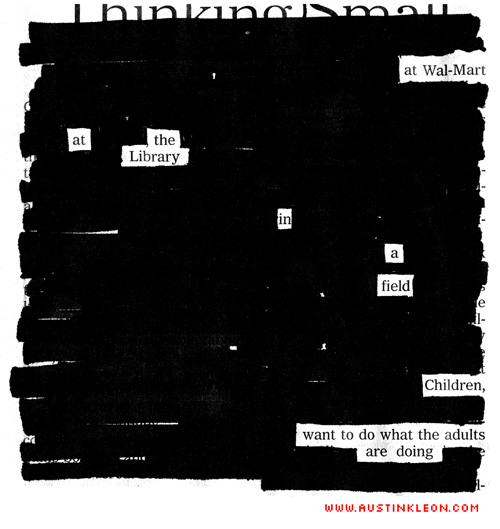
The first lady didn’t like this one, so it didn’t make it into the book.
Newspaper + Marker = Poetry. Buy the book.
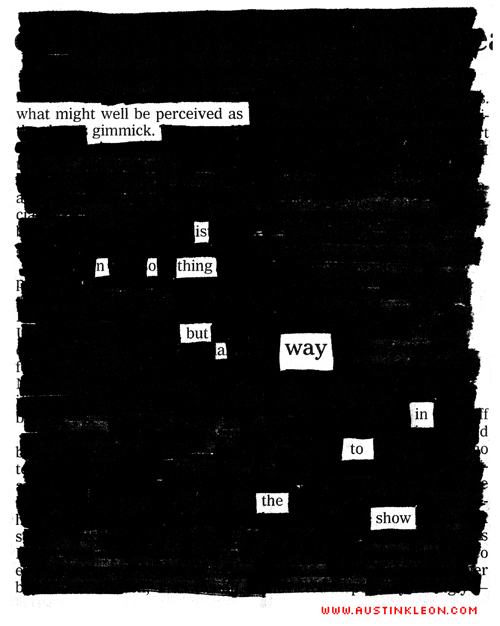
Walter Isaacson has written a front-page article for Time Magazine entitled “How To Save Your Newspaper.” The Oklahoman is taking their own approach to getting you to buy that Sunday paper:
Think a newspaper is good only for reading, recycling or wrapping dead fish?
Think again. Think … poetry.
Newspaper Blackout Poetry is the creation of poet Austin Kleon and only requires three things: a newspaper, a black marker and your creativity. We know you’ve got it, Oklahoma, and we’re willing to put our money where our mouth is.
Grab a copy of this Sunday’s The Oklahoman at CVS and other locations and pick any story from that paper. Take a marker and black out lines from the story, leaving only the words you want to remain visible. Those words become your poetry.
Your poem can rhyme, or not. It can be a haiku. It could be a limerick (keep it clean), it could be free-form. Kleon will help us pick the winner.
Problem solved!
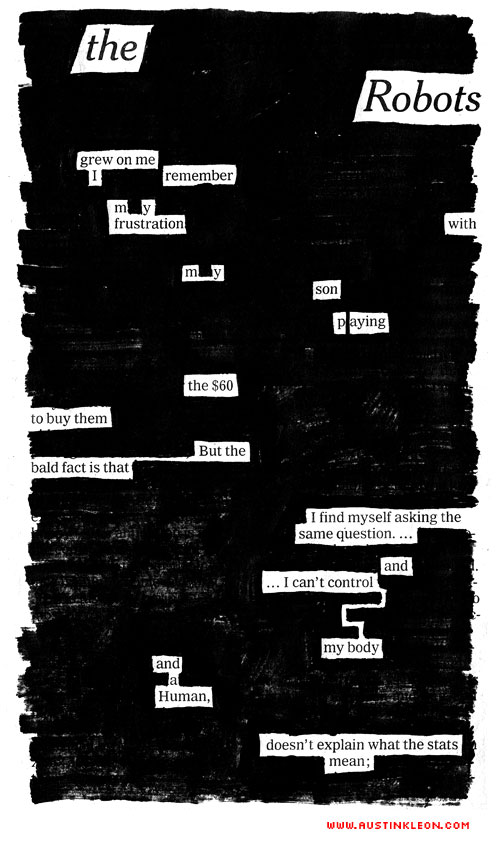
This one suffered the axe from the book. Just didn’t fit in to the flow…
Of note: we broke 600 fans on Facebook!
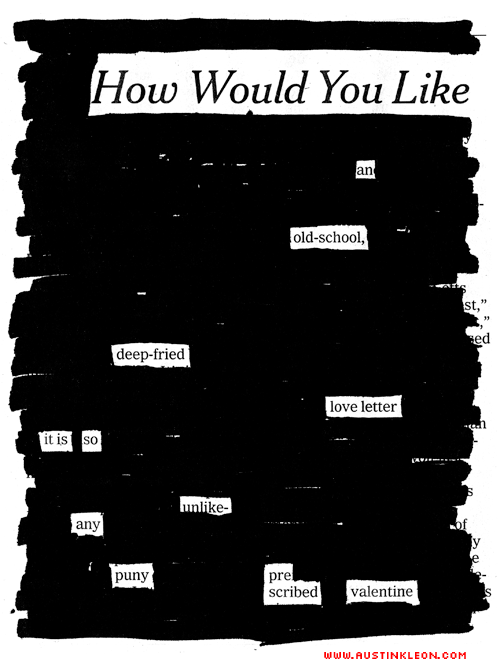
Valentine’s day is tomorrow: are you running low on time? Print out this PDF, fold it in half, fold it in half again (like we used to do in elementary school), and write an old-fashioned deep-fried love letter to your valentine!
DOWNLOAD THE FREE NEWSPAPER BLACKOUT POEMS VALENTINE CARD!
Link expires in 3 days, so hurry!
The link has expired!
BONUS ROUND: Why not take a photo of your loved one with their valentine and add it to the Newspaper Blackout Poems Flickr pool?
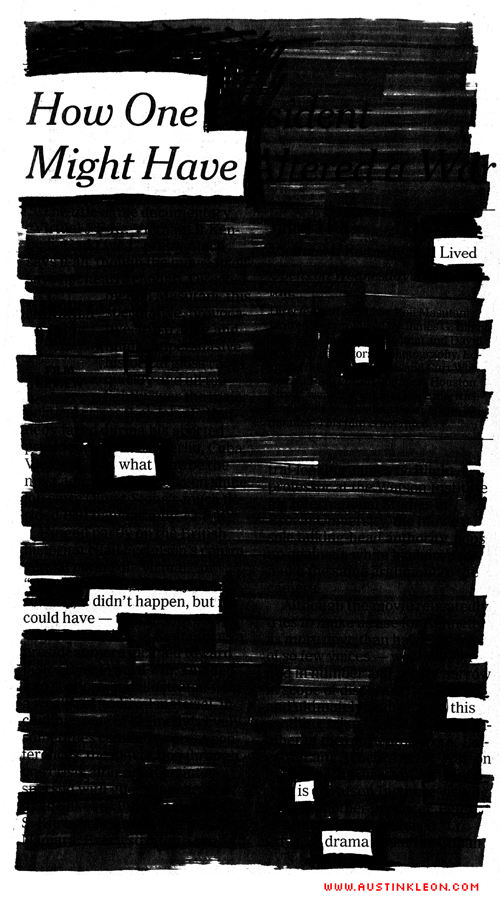
Another one cut from the book.
The cartoonist Tom Hart (Hutch Owen) has a fantastic blog called “Cartooning Like You Mean It,” and he’s been posting recently about mark-making, poetry, and drama. Here’s a clip from his post, “Drama vs. Poetry“:
Drama is the manipulation of characters and events in opposition with each other. In its most extreme, it is superficial and distancing: tired action movies about good guys and bad guys. In it’s best examples, characters are deeply drawn and communicate, questioning and exploring the themes of the drama both in their behaviors and thoughts.
Poetry I would argue is the single image designed to provoke or evoke other impressions and ideas in the mind and inner eye of the audience. Poetic image is created using the images of our society: people, places, and time etc. At its most extreme and superficial, it is cloying, simplistic, Hallmark cards and childish posters. At its most astute, it uses hints of drama to offer up enough action, enough motion and opposition between the characters and other elements to suggest worlds within the audience and to allow meditative space within them.
(Emphasis mine.)
I’ve often thought of my poems as little scenes from stories told in images made out of words. In fact, when I started making them, almost four years ago, they began as writing exercises to generate ideas for short stories. (Short stories are what they teach you to write in college, and so I tried to write them.)
In the book, Meg and I tried to string the poems together in an order that suggested a rise and fall, a sense of time and place, of movement…of some kind of narrative.
We’ll find out in another year whether we succeeded. The new sale date is February 9, 2010. A year from two days ago.
Who even knows where we’ll all be by then?
(Thanks to Derik Badman for pointing out the Hart quote.)
This site participates in the Amazon Affiliates program, the proceeds of which keep it free for anyone to read.